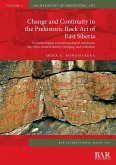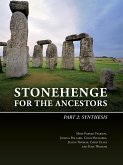As landscape art, the rock art of the central Andes offers clues regarding relationships between ancestor veneration and the negotiation of rights to water. To understand these relationships this book focuses on a large complement of rock art situated in highland Ancash, Peru, (3400 - 4250 m.a.s.l.). Regional survey excavation data from key rock art sites are synthesised to identify diachronic changes in imagery, production techniques and location, and to develop a typology and a spatio-temporal map for the rock art of the region that spans nearly 4,000 years (1800 BCE - CE 1820). These data are paired with 17th century Spanish Colonial accounts to trace back in time when specific, named groups socialised this landscape. A semiotic model, informed by interdisciplinary approaches, is applied to answer questions regarding the agency of these rock art places in socialising the land through establishing ancestral relations to water and rock features.
Hinweis: Dieser Artikel kann nur an eine deutsche Lieferadresse ausgeliefert werden.
Hinweis: Dieser Artikel kann nur an eine deutsche Lieferadresse ausgeliefert werden.








